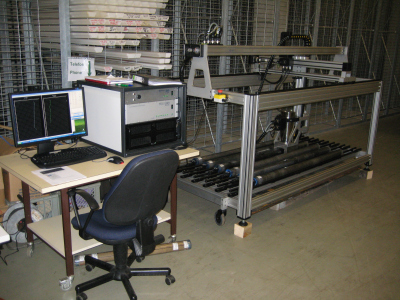Natural gamma rays (NGR)
NGR emissions of sediments are a function of the random and discrete decay of radioactive isotopes, predominantly those of 238U, 232Th, and 40K, and are measured through scintillation detectors housed in a shielded collector. A Geotek frame system allows up to six cores to be logged during a single run. The gamma ray detector has a measurement window of 7.5 cm, and the sampling interval is set to 6 cm, in order to maximize the resolution of measurements while minimizing resampling of intervals. The data are presented as total counts per second and refer to the integration of all emission counts over the gamma ray energy range between 0 and 3 MeV and is best suited for core-to-core correlation. No corrections are made to NGR data to account for volume effects related to sediment incompletely filling the core liner.
Whole-core gamma ray logging may start prior to the arrival of the science party in Bremen.




